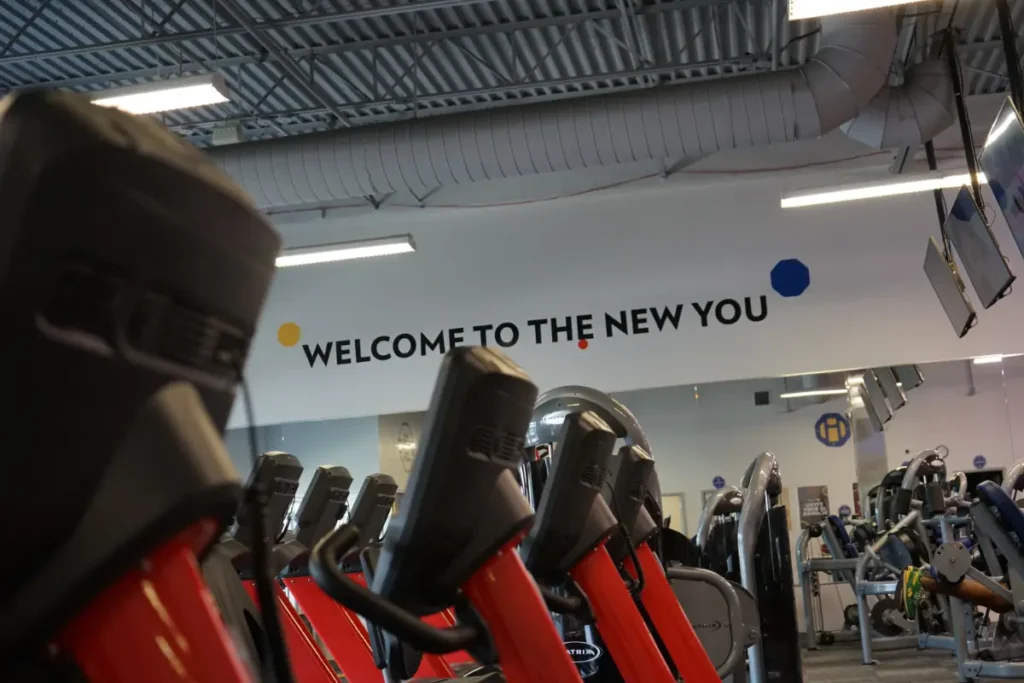If you’ve never been to the gym before or haven’t tried full-body workouts with weights, you may be missing a lot.
Full-body workouts not only save your time but have numerous benefits for everyone looking to get stronger, burn calories, and build muscles.
We covered everything you need to know to get started: from the benefits of full-body workouts with weights to how to avoid injuries.
So let’s dive in.
What Is A Full-Body Workout?
A full-body workout means you’re working multiple muscle groups in a single session. This holistic approach helps you engage your upper body, lower body, and core all in one go.
According to research, beginners could benefit the most from this type of workout compared to individuals who have been working out regularly.
The Difference Between A Full-Body Workout Vs A Split Workout
Think of a split workout as a strategic way of tackling your fitness routine. Instead of hitting all muscle groups every day, you designate specific days for specific areas.
For example, you may have a leg day on Monday, an arm day on Wednesday, etc. This approach allows you to focus intensely on particular muscle groups, giving them time to recover before the next intense workout.
It’s a smart way to structure your training, prevent overtraining, and optimize muscle growth and recovery.
But there are disadvantages.
Working on a specific muscle group may slow your progress. This could lead to frustration, and in the long run, lower your motivation for going to the gym and working out in general.
Benefits Of The Full-Body Workout
There are numerous benefits of a full-body workout, especially if you use different types of dumbbells during your workout sessions.
Maximum Efficiency, Minimum Time
If you’re caught in the time crunch of a busy schedule, desperately trying to squeeze in effective workouts, full-body workouts may be your solution. You don’t need to sacrifice one aspect of your fitness for another; a full-body workout ensures every minute at the gym counts, allowing you to maximize your efforts and see results.
Increased Calorie Burn
Full-body workouts include exercises like squats, plank, mountain climbers, and burpees. These types of exercises engage multiple muscle groups, elevating your heart rate and metabolism. The results? You’re burning more calories during the workouts, and as a cherry on a cake, your body continues to burn calories hours after you leave the gym.
Improved Functional Strength
While we mostly go to the gym to burn calories and lose weight, there’s another aspect of exercising we often forget: improving functional movements. Functional movements are those little movements we make during the day: walking to start, getting up from the bed, putting on our shoes. During full-body workouts, the whole body works simultaneously. This mimics real-life movements, making your body adapt to perform daily tasks more efficiently.
Enhanced Cardiovascular Health
Taking care of your heart is a crucial part of staying healthy and fit. But did you know that different moves like overhead throws are considered aerobic exercise? Aerobic exercise improves circulation, which results in lowered blood pressure. The more you groove with these exercises, the better your heart becomes at pumping, which could actually lower your resting heart rate over time.
Building Core Strength
A strong core is the epicenter of functional strength. Full-body workouts, with their emphasis on compound exercises, inherently engage and strengthen your core muscles. That way you’ll get a sculpted midsection plus enhanced ability to move with stability and control.
A great exercise tool for core strength that can be part of the full-body workout are resistance bands – use them in these 10 exercises for a stronger body.
How Often Should You Do Full Body Workouts?
The frequency of your full-body workout sessions plays an important role in reaching your fitness goals.
There are a few things to consider before answering this question.
If you’re a beginner just starting your fitness journey, two to three full-body sessions per week is like laying down a solid foundation. As you progress and your body becomes more accustomed to the rhythm, consider dialing it up to four or even five times a week.
Pay attention to how you feel after each session. If you’re feeling full of energy and have that post-exercise glow, you might be ready to up the frequency. On the other side, if your body is signaling a need for rest, be kind to yourself and allow those rest days to help you build your muscles.
Boost your weight loss journey with 5 fascinating motivational tips!
How To Prevent Injuries In The Gym?
Start your workout routine with a thorough warm-up session. This will ensure that your muscles are adequately prepared for different types of movements during your workout.
Don’t rush. Gradually progress into the workout, particularly if you are a beginner or doing some exercises for the first time. You can use lighter weights for the first few times, then move to heavier weights.
Maintaining proper form is imperative throughout each exercise. This will minimize the risk of injuries and promote optimal engagement of targeted muscle groups. If you’re unsure whether you’re doing the exercise correctly, don’t hesitate to ask a trainer in your gym to help you.
Listening attentively to your body. If you feel unusual discomfort or pain, don’t push your limits. It’s okay to give your body the time to learn the exercise and warm up.
Should You Try Full-Body Workouts?
Embarking on a full-body workout journey is a transformative step towards a healthier, fitter you. With the right mindset, a well-crafted routine, and a commitment to consistency, you’ll be amazed at the progress you can achieve.
Ready to start?
Visit HiTone Fitness for cutting-edge technology, supportive community, and real results.







